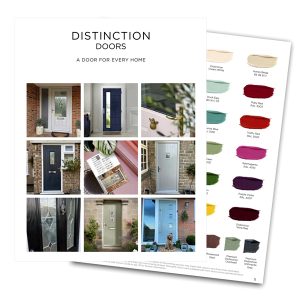How Often Should You Replace Exterior Doors?
Exterior doors play a critical role in a home’s security, energy efficiency, and curb appeal. These doors face daily wear and tear from weather, use, and time, which impacts their effectiveness and appearance. Knowing when to replace an exterior door can improve your home’s safety, cut down on energy costs, and enhance aesthetics. Here’s a guide to help you decide how often you should replace your exterior doors.
Assessing the Lifespan of Exterior Doors
The longevity of an exterior door depends on several factors, including the material, climate, usage, and maintenance. Generally, the lifespan of an exterior door can range between 20 to 50 years. However, not all doors age the same way.
1. Material Type
– Wood Doors: Wooden doors can last 20 to 30 years with proper care, but exposure to moisture, sunlight, and fluctuating temperatures may accelerate wear.
– Steel Doors: Steel doors offer a long lifespan, often lasting up to 40 years, but they can develop rust in humid or coastal climates.
– Composite Doors: Made from a blend of materials such as wood, uPVC, and insulating foam, composite doors are highly durable. They resist warping, rotting, and rust, often lasting between 30 and 50 years, making them a popular choice for homeowners seeking longevity with minimal maintenance.
2. Climate and Environmental Factors
Weather plays a significant role in the longevity of exterior doors. High humidity, extreme temperatures, and direct sunlight can damage materials over time. In humid climates, for instance, wooden doors may absorb moisture, leading to warping or rotting. Alternatively, doors in sunny regions may fade and crack from UV exposure. Regular maintenance can help mitigate these issues, but harsher environments may still shorten a door’s lifespan.
3. Frequency of Use
A frequently used door, such as a front door, may need replacement sooner than a door that sees less traffic. Constant opening and closing put stress on hinges, frames, and seals, which can wear out faster. High-traffic doors might require replacement in as few as 15 to 20 years, even if the material typically lasts longer.
Signs Your Exterior Door Needs Replacement
A few signs indicate when it’s time to replace an exterior door. Monitoring these factors can help you avoid security risks, energy loss, and unnecessary repairs.
1. Visible Damage and Deterioration
Look for cracks, warping, rust, or dents in the door. These signs not only compromise the door’s appearance but also weaken its structure. Doors with major structural issues lose their ability to provide proper security and insulation.
2. Drafts and Energy Loss
If you notice drafts or rising energy bills, the door’s insulation might have weakened. When seals wear out, gaps form around the edges of the door, allowing cold air in during winter and warm air during summer. Inadequate insulation can cost you more in heating and cooling expenses, so replacing the door can provide significant savings.
3. Difficulty Opening or Closing
When a door no longer opens or closes smoothly, it may indicate issues with the frame, hinges, or door itself. Warping, swelling, and misalignment can prevent doors from sealing properly, leaving your home vulnerable to drafts, water leaks, and even pests. If maintenance fails to fix these issues, replacing the door becomes necessary.
4. Outdated Style or Appearance
Sometimes, homeowners replace doors simply to update their home’s appearance. A new door style can give your property a fresh look, increase curb appeal, and even boost its market value. Manufacturers frequently offer doors with modern designs and energy-efficient features, allowing you to refresh your home’s exterior while enhancing performance.
Average Timeframes for Replacing Different Types of Exterior Doors
To determine the best replacement timeline for your doors, consider the typical lifespan of each type.
– Wooden Doors: Expect replacement every 20–30 years, depending on exposure to weather and maintenance.
– Steel Doors: Replace steel doors every 30–40 years, especially if rust or other signs of wear appear.
– Composite Doors: With proper care, composite doors can last 30–50 years, providing a long-term, low-maintenance option.
Regular maintenance, such as repainting, sealing, or re-caulking, can extend the lifespan of any door, but each material has its own maintenance requirements.
Tips to Extend the Life of Your Exterior Doors
Routine care can help you get the most out of your exterior doors. Follow these tips to extend their lifespan and maintain their appearance.
1. Regular Cleaning and Maintenance
Clean doors frequently to remove dirt, dust, and moisture that can lead to deterioration. For wood doors, use a mild cleaner, and apply a fresh coat of sealant or paint every few years to protect the surface. Steel doors may need rust treatment, while composite doors benefit from occasional washing and checking for any worn seals.
2. Lubricate Hinges and Hardware
Prevent wear on hinges and hardware by applying lubricant annually. This practice ensures smooth opening and closing, reduces stress on the door frame, and prevents squeaks and creaks.
3. Check Seals and Weatherstripping
Inspect weatherstripping regularly and replace it if it appears cracked or worn. Proper seals keep drafts out and improve insulation, allowing your door to function efficiently.
Benefits of Timely Replacement
Replacing an exterior door at the right time brings several advantages:
– Improved Energy Efficiency: Newer doors often come with better insulation, reducing energy bills.
– Enhanced Security: Modern doors provide stronger materials and advanced locking systems, increasing home safety.
– Aesthetic Upgrade: New doors can transform your home’s appearance, increasing curb appeal and property value.
Final Thoughts on Replacing Exterior Doors
To determine when to replace an exterior door, pay attention to its material, condition, and the climate in your area. Keep an eye out for signs like drafts, visible damage, and difficulty opening or closing. With regular maintenance and timely replacement, you can enjoy greater security, energy savings, and aesthetic appeal from your exterior doors.

